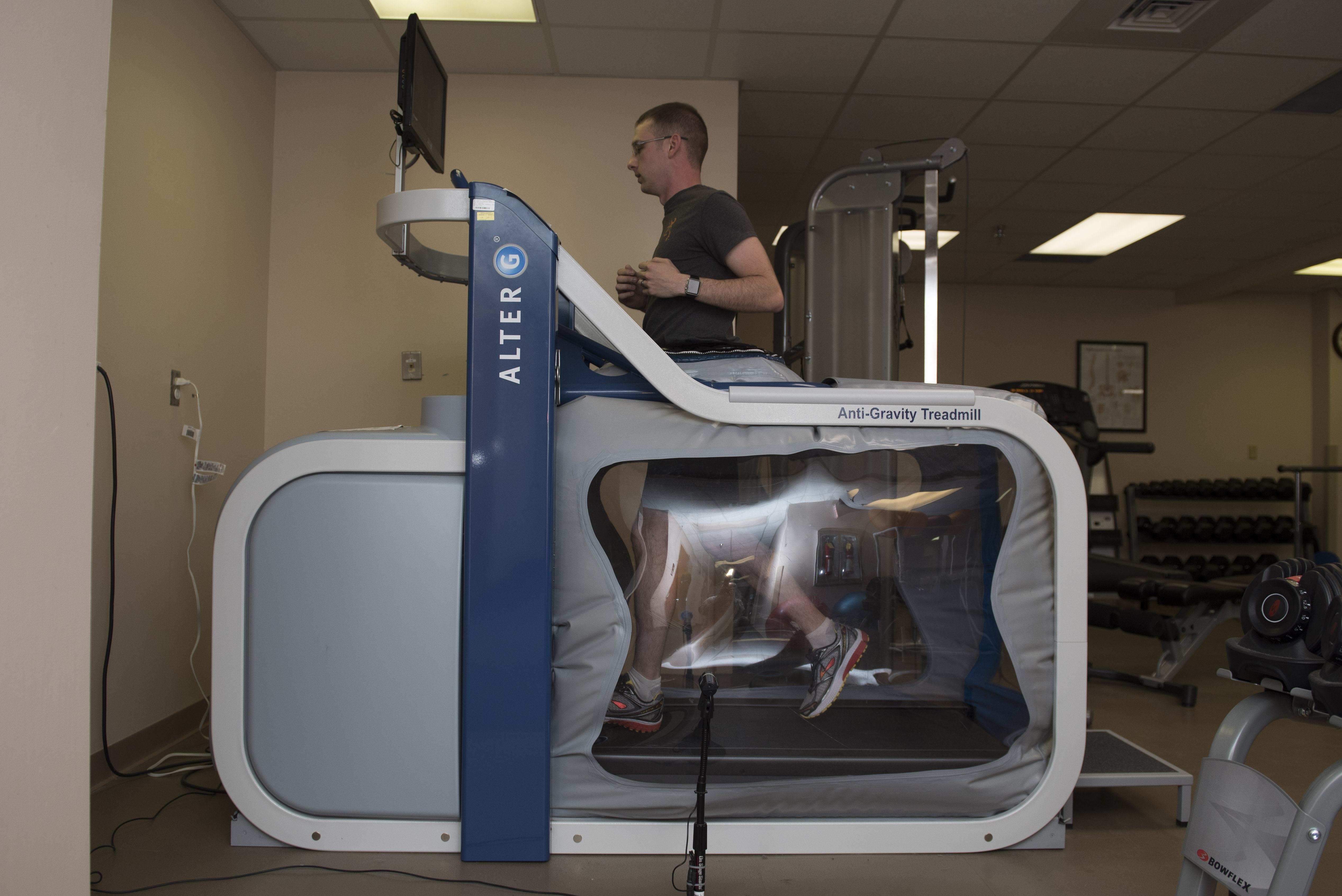
You’re more than half-way through your marathon training and coming up on the point in your training when you’ll be tapering off. You’ve been putting in the miles for the last few months and your body is definitely started to feel it. Over the past few months, you’ve felt great, but lately, there’s been some nagging pain. You’re convinced you couldn’t possibly be injured since you followed your proper training program to a tee. Yet, as you tick off the miles every day, worry consumes your focus. The last thing you want is to work so hard only to drag yourself across the finish line, or worse, be sidelined on the day of the marathon. In this case, using the AlterG Anti-Gravity Treadmill may be the best benefit you have to prevent an injury yet continue your training.
Usually used to rehabilitate an injury, the AlterG benefits anyone in a variety of ways. It provides a broad range of benefits to athletes as well as the elderly – from injury rehab to strength and conditioning.
Brief History Of The AlterG Anti-Gravity Treadmill
We experience every day the effects of gravity here on earth. It causes stress to our bones and muscles, whether we’re training for a marathon or simply carrying bags of groceries into our homes. It gives us our weight and our bodies feel the effect it every day. Yet, lack of gravity also affects the human body. This is why one biomechanics scientist approached NASA in the late 1980s and early 1990s with the possibility of new technology. It’s called Differential Air Press (DAP), and it’s the basis for the AlterG Anti-Gravity Treadmill.
According to NASA, the technology, developed by Ames Research Center scientist Robert Whalen, had the purpose of preventing bone and muscle loss for astronauts in space. Still, it ending up being a solution for many problems we experience on earth due to gravity – i.e., helping relieve the stress and pressure of gravity.
“Whalen proposed using differential air pressure in space to mimic the Earth’s gravity to prevent bone loss and muscle deterioration,” according to NASA. “As a National Research Council post-doctoral Fellow at Ames from 1988 to 1989, Whalen helped develop effective exercise regimens for NASA’s astronauts…”
This was to prevent bone loss and muscle atrophy that often occur in the lower body due to the lack of gravity in space. For astronauts, the problem was that because the leg muscles weren’t being used in space, they were deteriorating and causing problems when they returned to earth. Their leg muscles were unable to effectively support their weight. Using the technology in space by adding the effects of gravity through air pressure, astronauts were able to exercise using their leg muscles.
A Solution For Space Is A Solution On Earth
You’ve probably heard about the many products developed from NASA technology. Memory foam, baby formula, the Dustbuster, LEDs, and even prosthetics were developed from NASA technology.
Originally, NASA developed the AlterG to add the effects of gravity in space for astronauts. Yet, the technology benefits us on Earth by taking away gravity; ergo, anti-gravity. Using a harness and a pressurized air chamber, the treadmill uniformly reduces the gravitational load and body weight according to set measurements. According to the AlterG website:
[It enables] patients and athletes to move unrestricted and pain-free – restoring and building muscle strength, range of motion, balance, function, and fitness. No other unweighting technology offers as much freedom, control, and versatility.
Yet, the treadmill has more uses than rehabilitating an injury.
The Benefits Of Running With No Gravity
Ever wondered what it’s like to run in space? Try using an anti-gravity treadmill. Of course, using the treadmill isn’t exactly not using any gravity. Unlike the special anti-gravity soda that Charlie drinks in Willy Wonka, you won’t be flying in a zero-gravity chamber. But, the effects are nonetheless the same.
Using a harness, the pressurized air then supports your lower body, seemingly lifting you according to set measurements. It’s not like you’ll be floating above the machine, as you’ll always remain in contact with the treadmill track. Yet, the air pressure that supports your body negates the effects of the stress from running with gravity. Even though we often use this treadmill in injury rehabilitation, it has other uses and a broad range of benefits.
- Training through an injury
- Correcting running technique even before fully correcting strength deficits
- Gait training
- Weight control and reduction
- Strength and conditioning for older patients
- Conditioning at reduced loads
OSR’s AlterG Open To The Public
The machine is extremely expensive for many physical therapy clinics. However, at OSR Physical Therapy, we believe that much of the training we use in injury rehabilitation can be and should be used in injury prevention. This is why we’ve extended the use of our AlterG treadmill to the public. You can access this service through either becoming a patient or through a monthly membership. It’s located at our Eden Prairie location. If you’re interested in using the AlterG as part of your training and injury prevention program, contact our Eden Prairie location for more information.
Related Content
Beat Your Running PR
4 Ways To Avoid Running Pain
Running Tips From Physical Therapists
How Physical Therapy Helps Runners


